Candy From The 1940s – History & Interesting 1940s Candy Facts
The 1940s was the revolutionary era when Hollywood actors were blooming and music had become a great part of everyday life. It was the time when Rock N Roll history originated. But most importantly for sweet-lovers, the 1940s was a revolutionary era for candy manufacturing too, because the first Candy-Making machine was invented in 1947 by pharmacist Oliver Chase. Initially, it was created for pharmaceutical needs, but later became designed for candy manufacturing.
Candy from the 1940s was more of a luxury than it is today. The world was going through tough times. Restaurant food was rationed, and candy manufacturers had limited ingredients, but that didn’t stop them from creating some sweet memories and exciting children with newly introduced candy.
Please leave a review or any memories of this snack in the comments at the bottom of this page. Thank you!
Because of World War II, people were trying to find distractions in their favorite activities, like watching movies or listening to their favorite music, and, of course, they had candy to make their lives sweeter. What was your favorite activity back then? Which candy from the 1940s do you enjoy as a favorite movie snack today?
Despite difficult times, you could still find children at school with Slim Jims in their pockets. Teachers could still find Bazooka Gum stuck under the desks. Cheerios cereal was the most widely admired breakfast among children. You would see people smoking pipes with Licorice, or debating the flavors of Smarties. Flavors were limited, chocolate was not for everyone, but everyone could get a little sweetness and joy from their favorite 40s candy.
Top 10 Candy Names From The 1940s
- Almond Joy
- Dots Candy
- Fun Dip
- Mike & Ike
- Whoppers
- York Peppermint Pattie
- Jolly Ranchers
- Bazooka Bubble Gum
- Candy Cigarettes
- Smarties
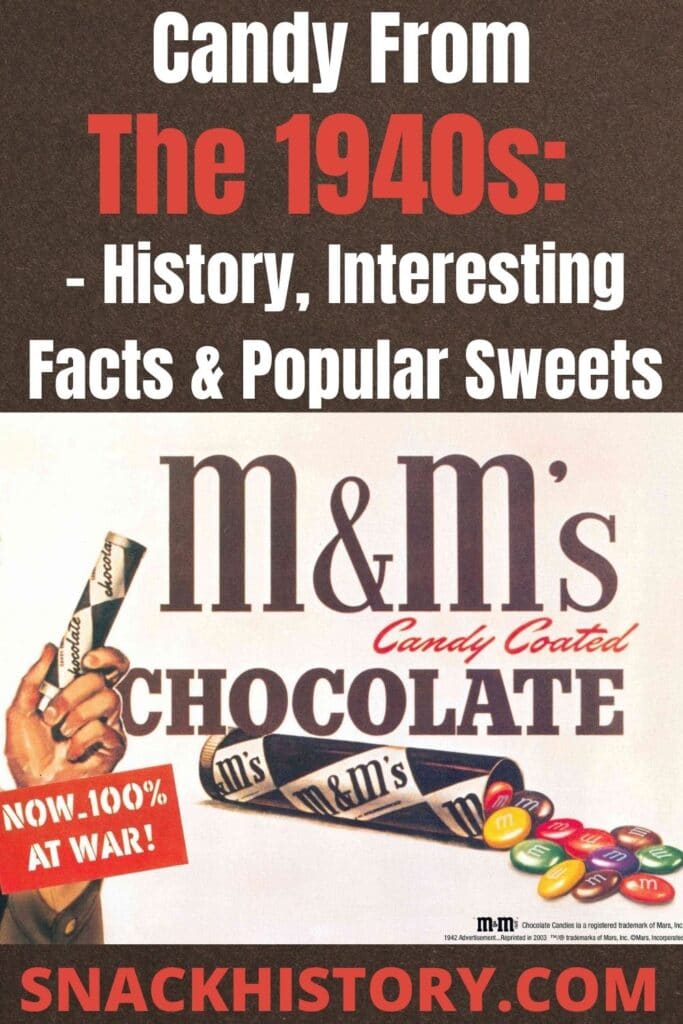
Candy Industry during World War II
A lot of people had to leave overseas because of World War II. They had to leave a lot of things behind, like families, children, and their favorite places. Soldiers often had to eat MRE’s, which are Meals Ready to Eat. Candy has been around for a very long time, but during World War II, it truly wrote a unique history.
The history of candy in wartime pushed 40s candy manufacturers to create one of the most popular sweets in history. Because candy was used by soldiers during World War II as an MRE, M&Ms were specially created in New Jersey to be included in their everyday meal ration. It is chocolate and peanuts with a hard coating, which was a great addition to soldiers during limited supplies. Chances are high you enjoy M&Ms as an everyday snack today, but back then they were specially made for troops who were sent overseas.
After the war ended, soldiers who came back to their families, believe it or not, missed something from the war. Of course, it was candy they were missing. Because of the high demand, M&Ms were produced for the masses.
Hershey’s also created a special bar to help soldiers in World War II. It was called “D Bar”. This bar was very high in calories and had a high melting point. That’s why it was known as the “survival ratio” for soldiers. Although not much is known about D Bat, Hershey’s candies such as Krackel, Take 5, Mr Goodbar, Zero Bar or 5th Avenue Bar still tend to be popular.
Top 10 Candy from the 1940s
Despite being hit hard during difficult times, candy manufacturers still found variations of solutions to create a sweet decade and introduce some famous candies that we still adore today. Read the rest of the article to find out if your favorite candy from the 1940s is on the list.
1. Almond Joy
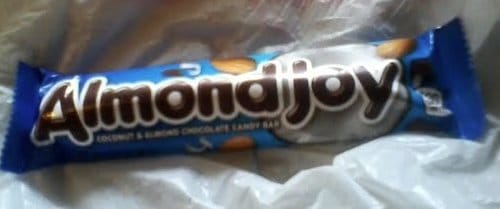
Almond Joy was first introduced in 1946. This chewy coconut candy with whole almonds and a milk chocolate cover is there to give people “joy”, as the name suggests. It was the replacement of the Dreams Bar from 1934. The almond Joy is a product of Hershey’s Company, which also produces Mounds candy bar, a similar candy but without nuts and with dark chocolate.
Peter Paul was the one who came up with the name of this candy from the 1940s. He was also responsible for advertising. They advertised Almond Joy in tandem with Mounds with a slogan that said “sometimes you feel like a nut, sometimes you don’t”. Do you feel like a nut? Or do you prefer nut-free alternatives to almond joy? However nutty you feel, Almond Joy is there to give you “joy” whenever you need it.
2. Dots Candy
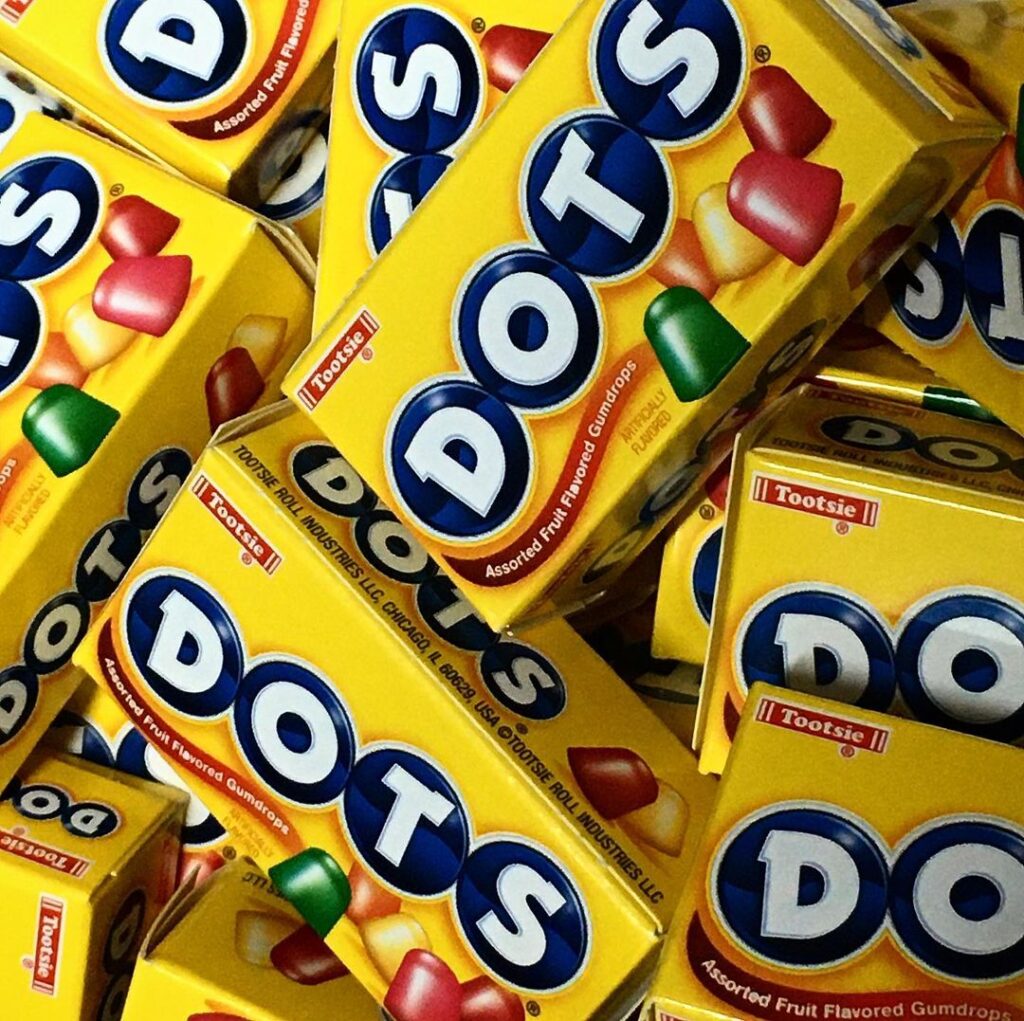
Do you remember this retro candy from your childhood? Maybe it was your grandparents’ favorite when they were kids. Dots Candy is a popular candy from the 1940s, which was created in 1945. Initially, it was introduced by the Maison Candy Company, now known as Tootsie Roll, which is a popular gumdrop candy manufacturer. Dots Candy was the first gumdrop candy ever created and still continues to be the number one.
There are various types of Dots Candy, from the original ones, which include cherry, lemon, lime, strawberry, and orange flavors, to completely new types of this traditional 40s candy. Nowadays, you can also taste sour dots with citric acid, tropical flavors, and yogurt dots. And if you still enjoy eating this fun candy, which one is your favorite: sweet, sour, or tropical Dots?
3. Fun Dip
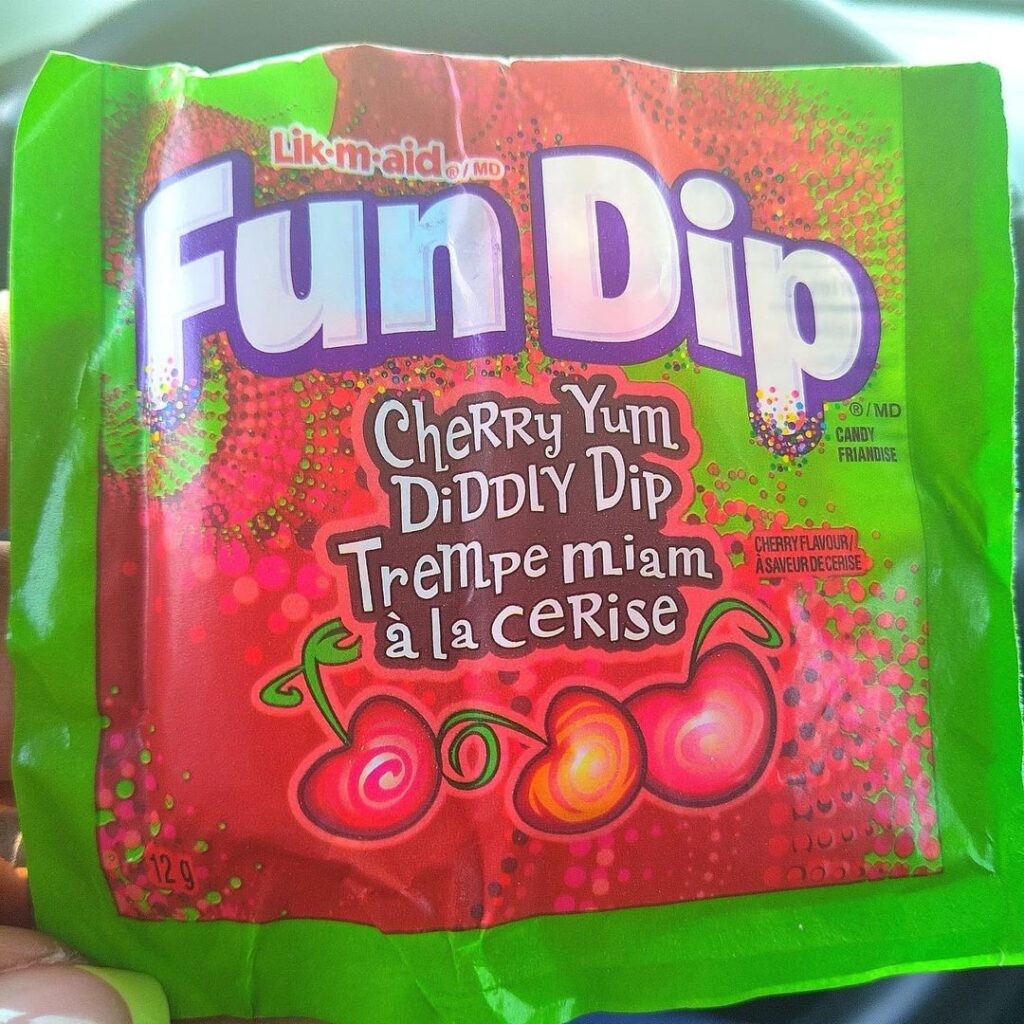
The Fun Dip was introduced by the Ferrara Candy Company and has been around since the 1940s. It was initially called Lik-M-Aid. Fun Dip is similar to Wonka-produced Pixie Stix. It comes in different flavors. The most popular ones include the cherry, grape, and raspberry-apple combination. The Raspberry-apple was the entertaining one, because it was initially blue, but created the color green when wet.
Fun Dip is a very exciting sweet to eat, especially among children. Do you enjoy “fun dipping”? The initial candy came with edible candy sticks to dip in flavored sugar. It is now used to make flavored whipped cream as well as normal candy. So, which one do you prefer, Fun Dip candy or Fun Dip whipped cream?
4. Mike & Ike
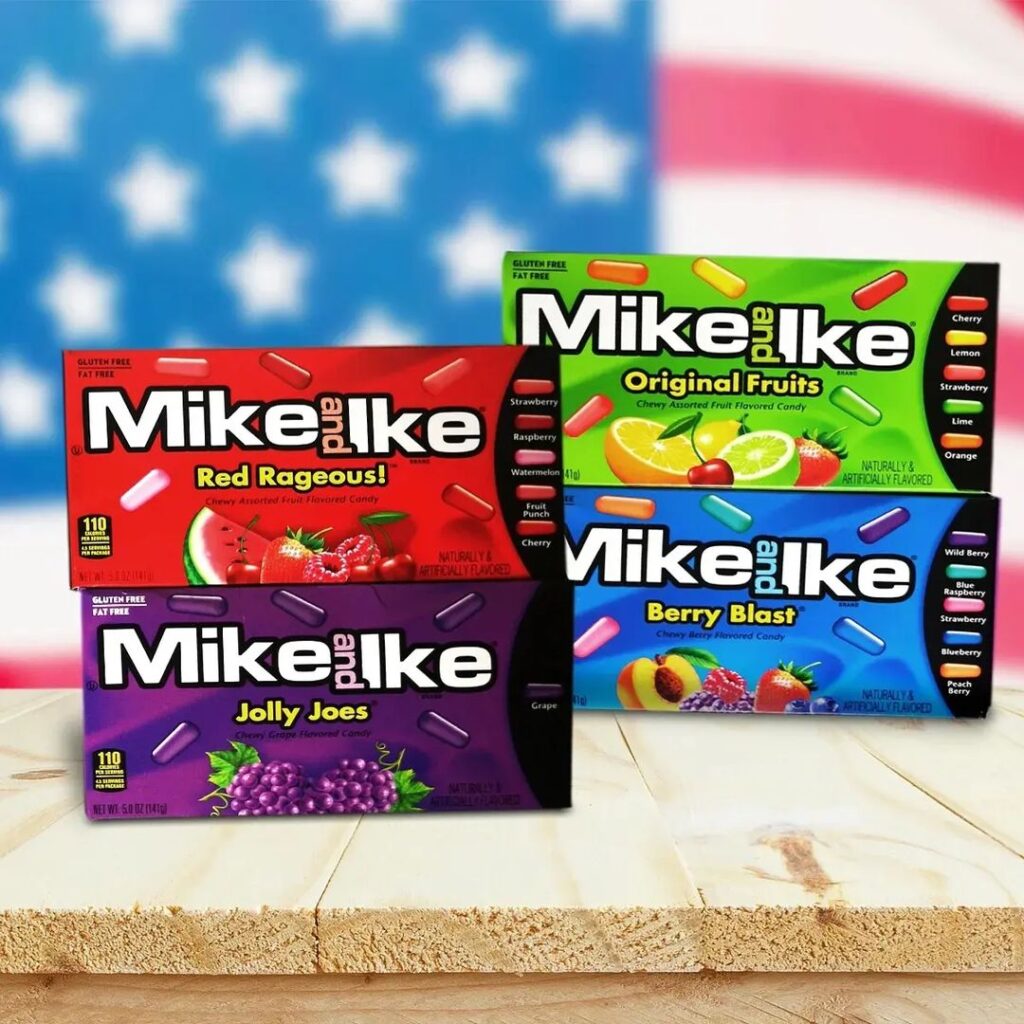
Mike & Ike is chewy, fruit-flavored candy from the 1940s. It was introduced in 1940 by the company Just Born, Inc. The name of the candy has an interesting history. Some believe that name referred to Marina brothers, two of whom were nicknamed Mike and Ike because they looked alike. They had a role in the film, the Wizard of Oz. Another theory suggests that the creators of this 40s candy were named Mike and Ike.
Mike & Ike were originally all fruit-flavored but now come in a variety of tastes. They are very similar to Hot Tamales, which are produced by the same manufacturer, though they are not spicy.
5. Whoppers
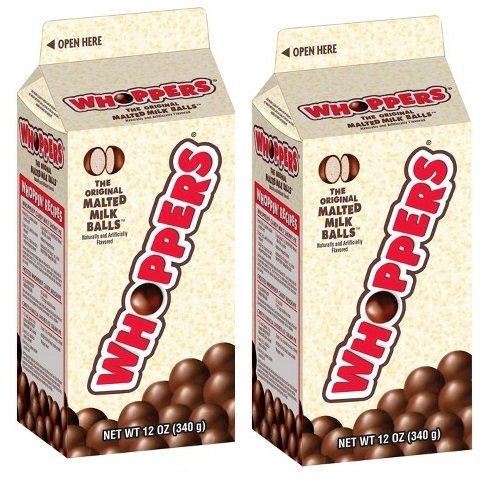
Introduced in 1949 by Leaf Brands, Whoppers is the all-time favorite candy from the 1940s. Did you know that they were initially called “Giants” and were produced by the Overland Candy Company? They are malted milk balls with a chocolate cover. Because of their small size, they are fun and exciting to eat.
In the beginning, they were sold unwrapped. When they became cellophane wrapped, you could get two for a penny. Pretty good deal for a penny, right?
Whoppers were popular snacks at movie theaters. They came in three flavors, chocolate, strawberry milkshake, and Reese’s Peanut Buttercup. People have enjoyed them since the 1930s, when they were still called “Giants”.
6. York Peppermint Pattie
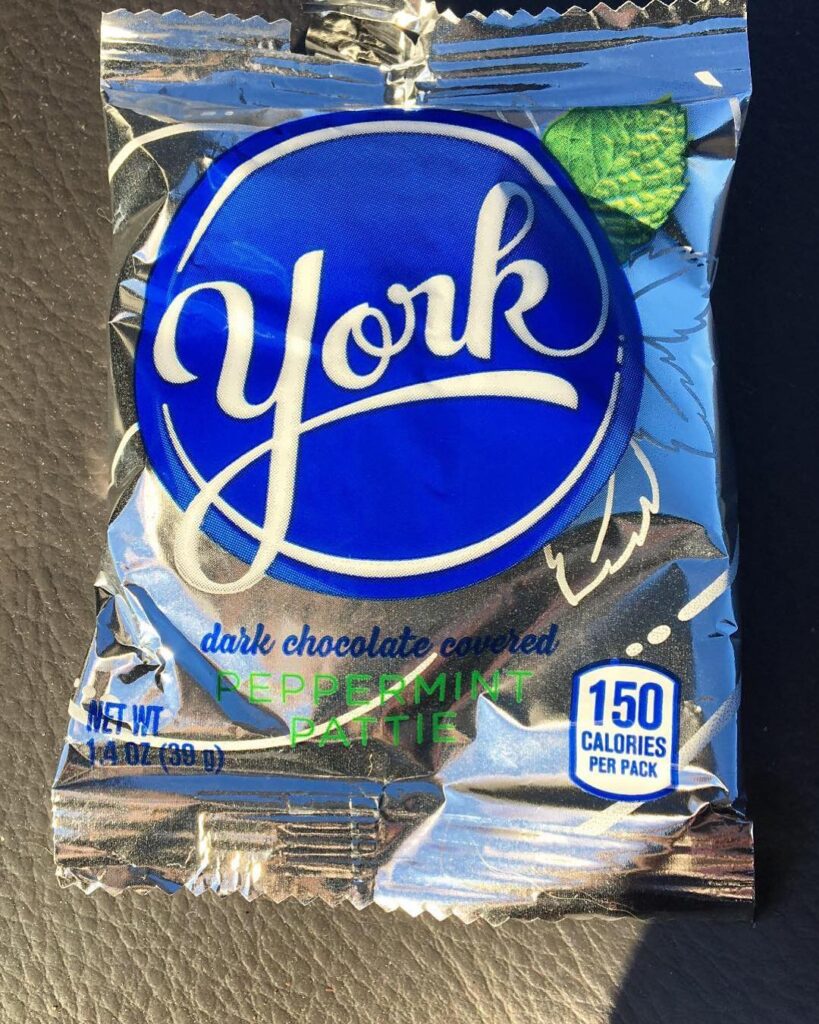
The name probably tells you that the York Peppermint Pattie was first produced in York, Pennsylvania, by the York Cone Company in 1940. The company originally sold waffles and ice cream cones before the owner of the company, Henry Kessler, wanted to make chocolate and mint-themed candy.
If you are in favor of contrasting tastes, bittersweet dark chocolate and strongly peppermint-flavored York are probably one of your favorites. York Peppermint Pattie is also a popular Christmas candy, doesn’t it set you in the mood for Christmas?
For holidays, York Peppermint Pattie offers variations of shapes, like hearts for Valentine’s Day candy and eggs or bunny shapes for Easter candy.
Today, this retro candy from the 1940s is produced by Hershey’s Company.
7. Jolly Ranchers
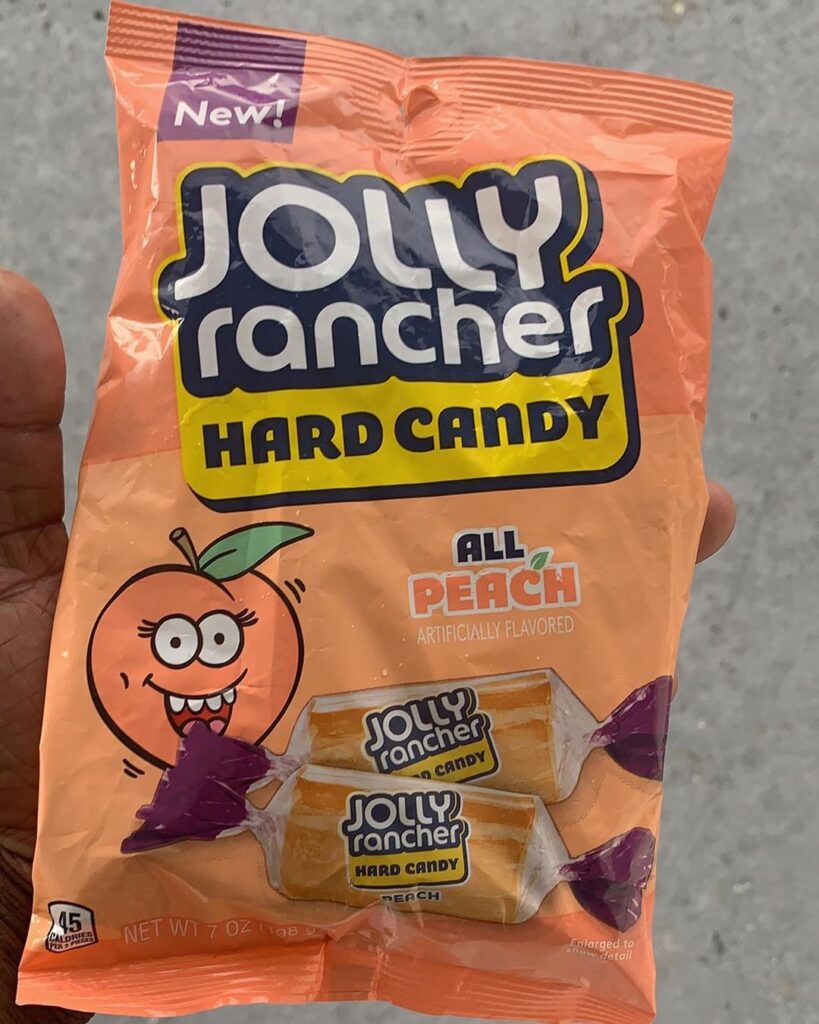
This sweet, mouthwatering candy came out in 1949. The producers of the Jolly Ranchers, Bill and Dorthy Harmon, initially manufactured ice cream. The company was located in Colorado, so ice cream was not very popular in Colorado’s cold winters. After increased demand for hard candy, they switched to Jolly Ranchers.
They are long-lasting, strongly flavored hard candies. Initial tastes included apple, grape, and Fire Stix. It has become very popular, especially among elementary school kids. Who would not go crazy for colorful, delicious candy? Even adults would not resist the temptation.
After becoming the property of Hershey’s Company, Jolly Ranchers expanded into creating lollipops, jelly beans, chewy candies, sour candies, jolly rancher drinks, and many more. You can even find Jolly Rancher pillows, lip glosses, and shirts in the supermarkets. Any Jolly Rancher fans here?
8. Bazooka Bubble Gum
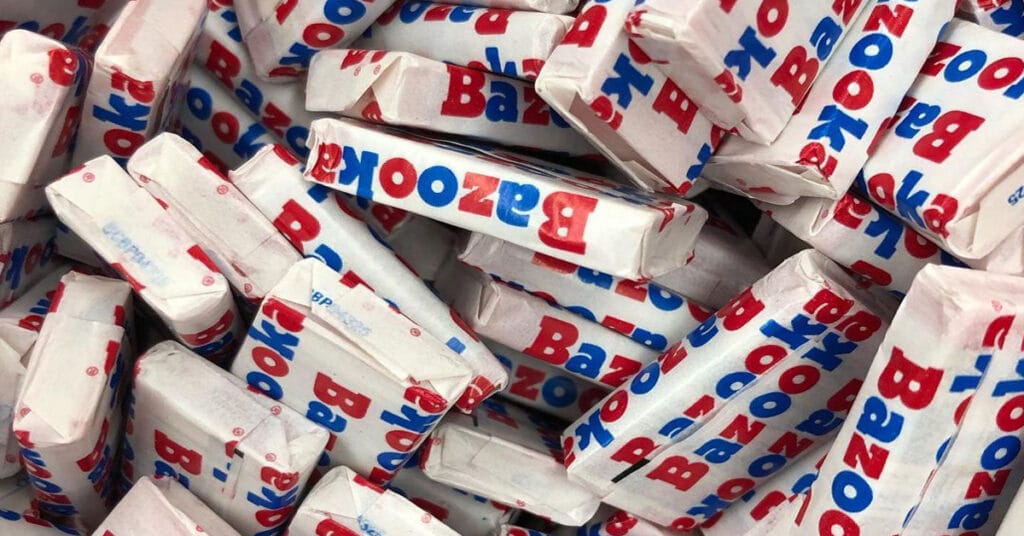
Bazooka Bubble Gum was introduced shortly after World War II by the Topps Company in New York. You probably understand why it was called the Bazooka. You are right; war really had something to do with it. It was named after a rocket-propelled weapon used by the US Army in World War II. The weapon itself was named after a musical instrument.
Different from the first-ever created Dubble Bubble Gum, which was offered only in flavor and color, you could find Bazooka Bubble Gum in many different flavors, like grapes, watermelon, strawberries, as well as the original flavor.
It was sold internationally and became a memorable candy from the 1940s. The producers offered collectible Bazooka Bubble Gum wrappers with Bazooka Joe comic strips on them. Did you enjoy reading comic strips while chewing your favorite gum from your childhood?
9. Candy Cigarettes
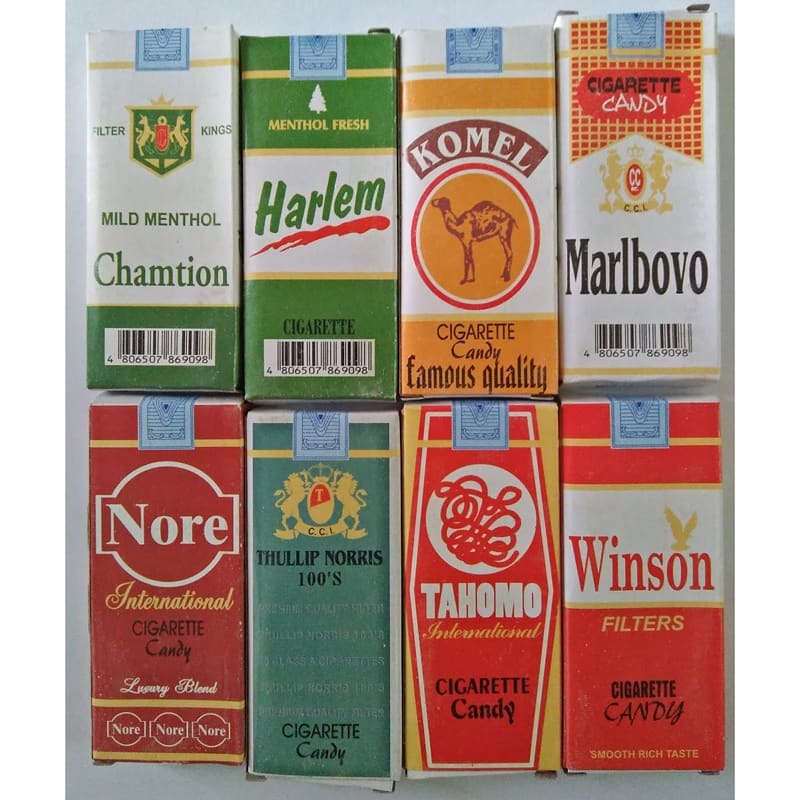
Candy Cigarettes were the most popular and entertaining candy from the 1940s. Back then, smoking was not seen as a health concern, so it demonstrated different variations of cigarettes by that time. These mint-flavored candies resembled real cigarettes a lot. Even the packaging was hard to distinguish from the real ones.
You probably understand why it was so popular among teenagers. Back then it was cool to smoke, so those who were not allowed to smoke had fun with Candy Cigarettes. Believe it or not, parents really used to worry that these Candy Cigarettes would push their children to smoke as adults. Were you a worried parent or were you the one who was trying to be cool among peers with Candy Cigarettes in their mouths?
10. Smarties
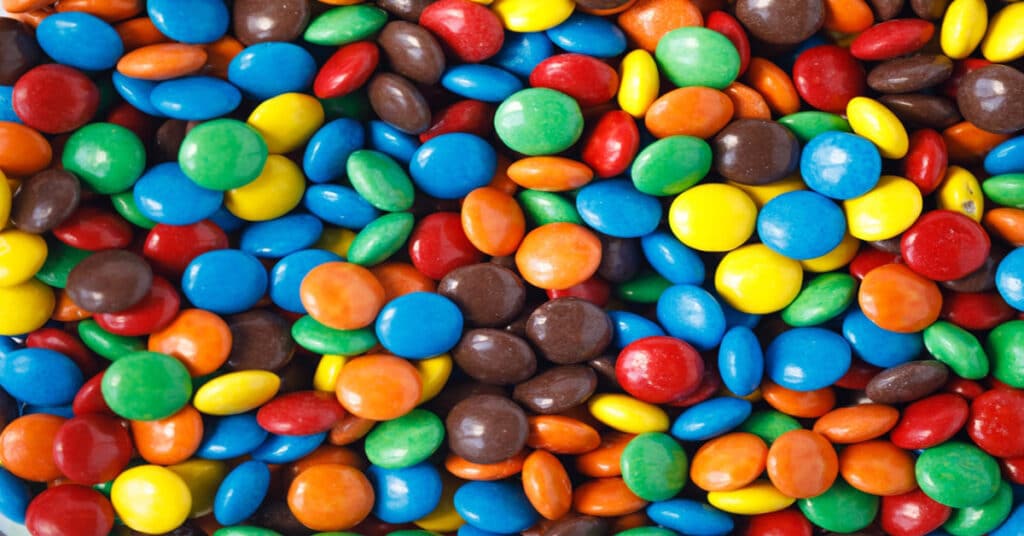
Smarties was founded in 1949 by Edward Dee. He was from a candy-making family from London. During World War II, they settled in New Jersey. This is where the history of the popular sugar candy from the 1940s started. Dee used a repurposed pellet-making machine from World War II. He pressed fruit-flavored sugar and sold it like candy. They were delivered by car in the US and Canada, where they are sold as Rockets.
So why are they called “Smarties”? The verb “too smart” means to involuntarily pucker the face. This is exactly the face you get when you eat this tangy-flavored candy. Kids definitely loved puckering their faces while eating them. What about you? Do you still enjoy Smarties?
Today, the Smarties Candy Company is run by Dee’s granddaughter. She once said that they didn’t want to change the initial recipe, but a lot has changed and developed in smartie candy production to satisfy your needs.
1940s Candy Bottom Line
Many things changed during the 1940s in candy production. A lot of improvident factors played a role in candy manufacturing. Chocolate and nut-filled candy bars became a luxury. The candy-making factories lacked the ingredients. They had few options to offer. Different from the 1920s’ Milk Duds or Anise Squares, as well as the 1930s’ Tootsie Pops or Rolo, in the 1940s candy makers had to cut down on expensive ingredients.
There was only one goal – to make candy affordable and to please children, who had to go through really tough times. And we bet children weren’t the only ones who enjoyed fruit-flavored Jolly Ranchers or chewy Bazooka Bubble Gums.
Besides children, candy manufacturing played a huge role in soldiers’ difficult lives. Even though they left many things behind, they still had one thing to look forward to every day. A treat specially created for them to give them energy and enthusiasm for fighting, to make hard, dark days easier and brighter.
You have probably heard stories from your parents or grandparents, or even at school, teachers and students discussing newly introduced favorite candies. Simple or not, the sugary, fruit-flavored candy from the 1940s truly created an important history.
Candy Era

Nato is a content writer and researcher with a background in psychology. She’s passionate about writing about the candy industry and exploring the cultural significance of sweets and treats. She believes that the stories behind our favorite snacks can reveal a great deal about our values.
Please leave a review or any memories of this snack in the comments below. Thank you!
Click here for a full A-Z list of Snacks and Candy
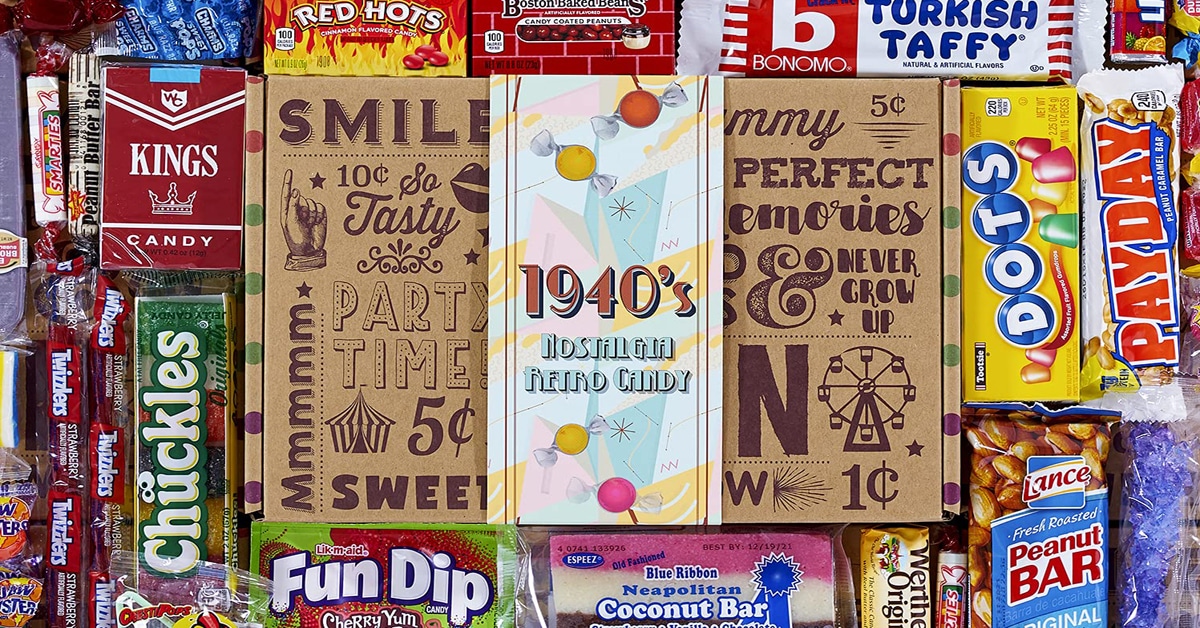
Well,I did read a lot was very interesting to the oldest candy to the newest just reading about all the candy I still miss all the penny candy that just to be I’d love to to in a store and have 25 cents I’d get a bag full.
I loved all the penny candy I ust to get back in the 60sure wish they would come back.